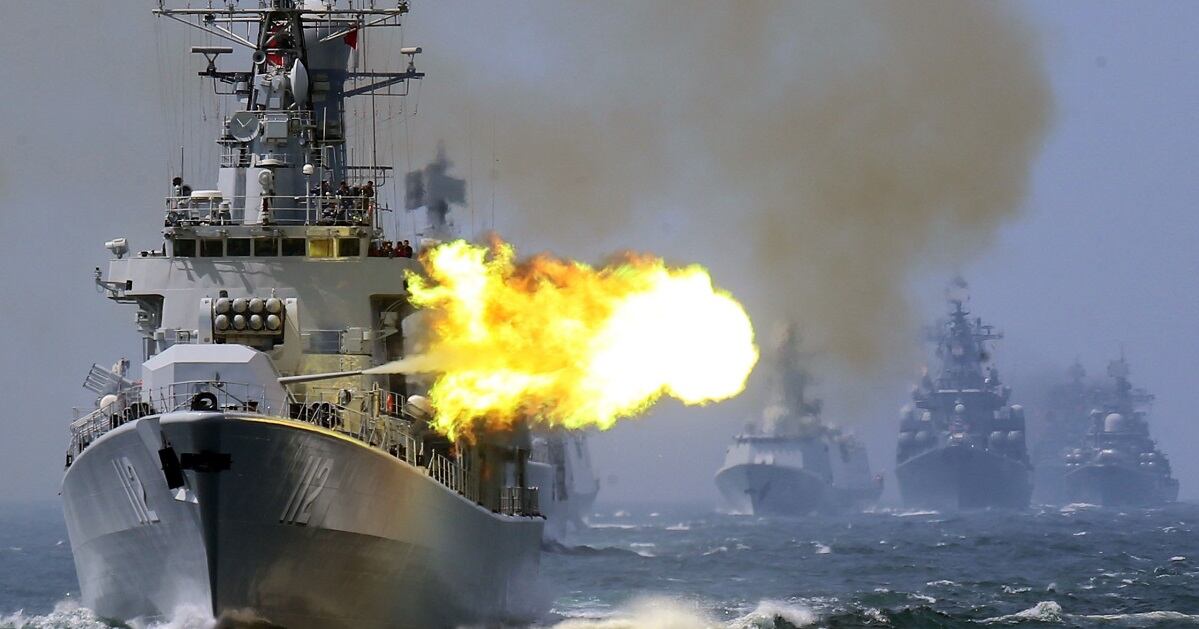One simple step can “revolutionize surface warfare,” as U.S. Navy Secretary Carlos Del Toro put it at the latest naval conference WEST in San Diego: rearming our warships at sea. Today the only way to reload vertical launching system cells — the mainstay of the Navy’s front-line warship — is to pull into port, often taking warships out of action for weeks at a time.
Consider the situation in the Red Sea. For our Navy’s warships engaging the Houthi rebel group, reloading VLS cells would require a transit through the Suez Canal to ports in Greece or Italy, about 2,000 miles or more away. This lost time, under persistent Houthi attacks, proves this ability to reload underway is no longer a luxury — it’s a necessity.
VLS cells carry most of the surface fleet’s firepower onboard destroyers and cruisers. From VLS cells, the Navy employs air and missile defense weapons as well as long-range strike and anti-ship missiles. The Arleigh Burke-class destroyers have the capacity to store 90-96 missiles in VLS cells depending on the variant of warship. Warships are loaded with an assortment of weapons before deploying to meet expected mission needs and ensure the ship’s self-defense.
Reloading the most capable missile defense weapon — the RIM-161, also known as the Standard Missile-3 — into one of these vertical cells is a delicate matter. It requires precisely loading a 1.5-ton, 21.5-foot-long missile into a tube built into the hull of the ship. At sea, the movement caused by even calm seas makes this nearly impossible to do without damaging the missile.
A 2019 Center for Strategic and Budgetary Assessments study found a VLS reload-at-sea capability could provide the equivalent of an additional 18 destroyers or cruisers in a Pacific war scenario. With China’s modern navy larger than ours and backed by a massive shipbuilding industry, every one of our warships must be kept in the fight. As such, the U.S. Navy can ill afford to lose one warship for weeks to arrive at a safe Pacific harbor to reload weapons.
RELATED

Fortunately, rearming VLS cells at sea is not an impossible engineering problem.
The Navy has explored two options since the mid-1990s. The first uses a conventional approach reminiscent of time-tested underway replenishment at-sea methods: the Transportable Re-Arming Mechanism. The second, more complex approach uses a crane that compensates for wave movements: Large Vessel Interface Lift On/Lift Off.
Between the two approaches, the TRAM system’s simpler approach is closer to an at-sea demonstration. The secretary’s comments at WEST indicate this is coming in the summer. Once completed the next step will be to adapt the method to operational destroyers — a task that the Navy’s recent performance indicates will be too long in coming.
Houthi attacks on shipping in the Red Sea have been going on for months, and the destroyer Carney has been there from the beginning. As of Feb. 3, it had been shooting down Houthi missiles and drones for almost four months. When it must depart the fight for a distant port to load its VLS cells, the lost firepower will have to be made up someway, or operations will be affected.
Calls for developing the capability to reload VLS cells at sea is not new. And the attention of the secretary of the Navy dates back to a major speech given at Columbia University in December 2022. The secretary’s attention clearly underscores the importance placed on developing it. Yet progress seems stalled.
It’s time Congress steps in and gets answers to help the Navy get what it needs to develop this critical capability. Perhaps some of the needed money could be spared from the $114.7 million requested in the current defense budget for diversity, equity and inclusion activities.
The nation cannot afford to learn the importance of having VLS rearming at sea after a major war in Asia begins. As the secretary has stated, “history is forged in the crucible of action, not the comfort of hindsight.”
Brent D. Sadler is a senior research fellow in naval warfare and advanced technologies at The Heritage Foundation think tank.





